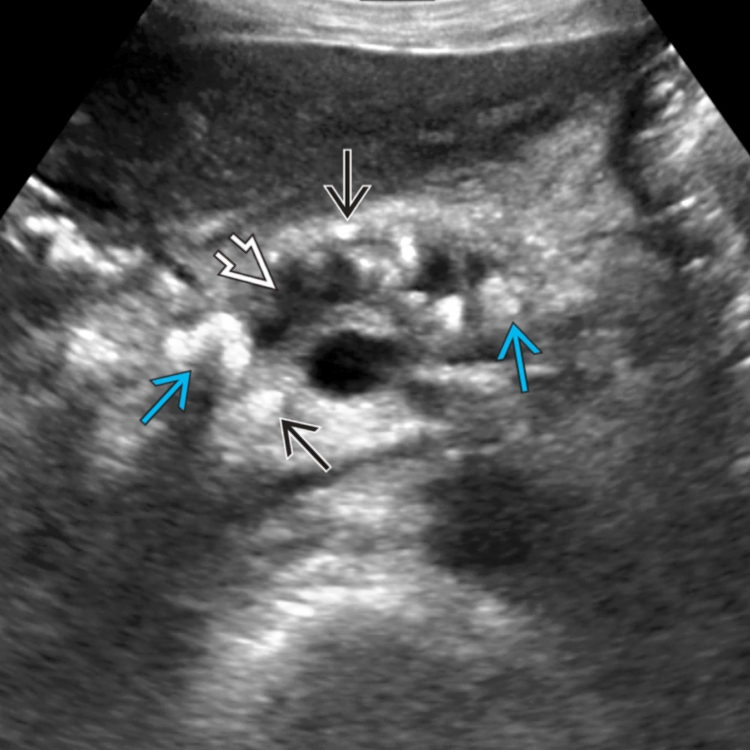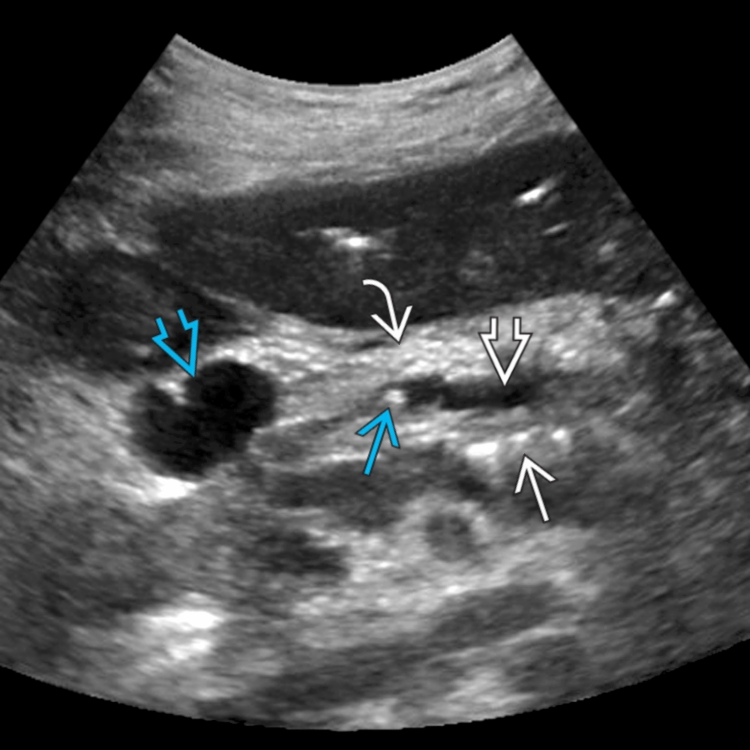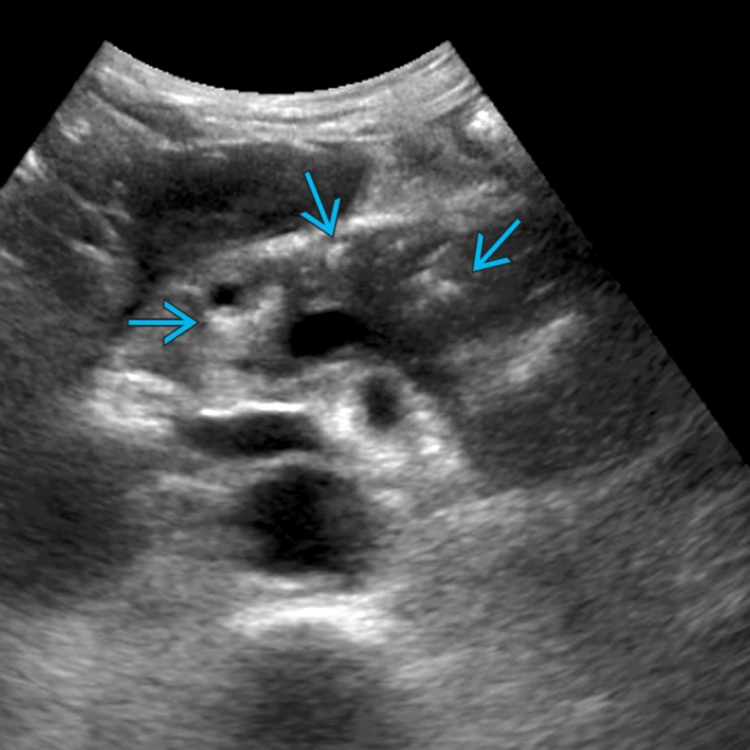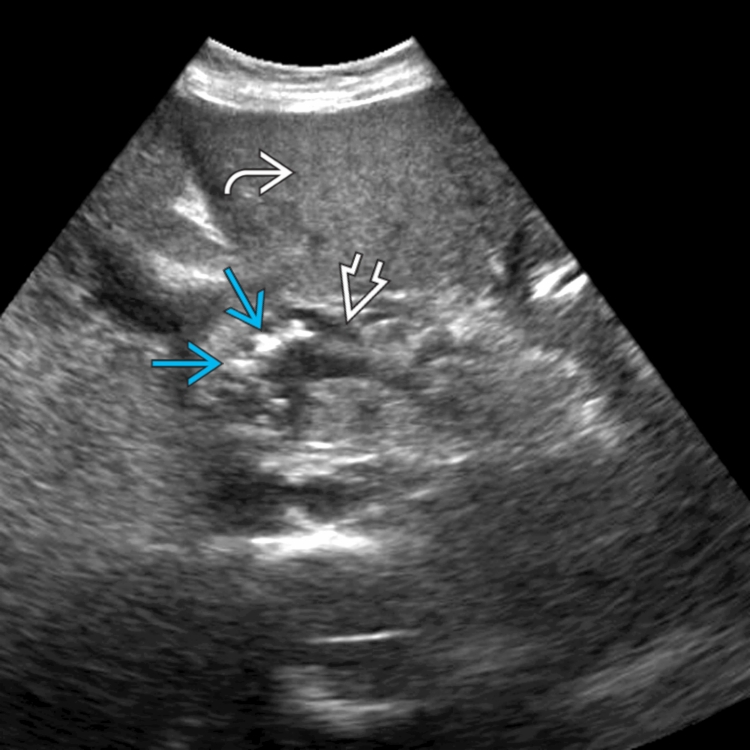KEY FACTS
Terminology
- •
Progressive, irreversible inflammatory and fibrosing disease
Imaging
- •
Dilated main pancreatic duct (MPD) with intraductal calculi is highly specific for chronic pancreatitis
- •
Gland may be enlarged in early stage of chronic pancreatitis or during acute on chronic episode; focal or diffuse
- ○
Focal enlargement can mimic adenocarcinoma
- ○
- •
Diffuse fusiform hypoechoic enlargement in autoimmune type > focal or multifocal ± ductal dilation in focal type
- •
Later: Inflammation and fibrosis causes atrophy
- •
Calcification/calculi: ~ 90% of calcific pancreatitis caused by alcoholism
- •
EUS best imaging test to detect early changes of chronic pancreatitis
- •
MRCP best to visualize dilated MPD and side branches
- ○
Assess for ductal disruption: Continuity of MPD with pseudocyst, bowel, or pleural space
- ○
- •
MR with contrast helpful to distinguish tumor from enlargement related to inflammation
- •
CT best to evaluate extent of calcifications and inflammation related to acute on chronic pancreatitis
- •
Complications: Pseudocyst
- •
Color Doppler for vascular complications: Portosplenic venous thrombosis (5%); arterial pseudoaneurysm
Top Differential Diagnoses
- •
Infiltrating pancreatic carcinoma
- •
Acute pancreatitis
- •
Autoimmune pancreatitis
- •
Intraductal papillary mucinous neoplasm
Pathology
- •
Alcohol abuse is most common cause in USA; gallstones not considered risk factor
- ○
Idiopathic in up to 40%; hyperlipidemia, hyperparathyroidism, hypercalcemia, trauma
- ○
Cystic fibrosis, hereditary pancreatitis
- ○
Pancreas divisum or annular pancreas
- ○
Autoimmune IgG4 related
- ○
Clinical Issues
- •
Males > females; mean: 5th decade
- •
Recurrent attacks of epigastric pain, occasionally radiating to back, diarrhea, weight loss, biliary or duodenal obstruction, diabetes
Diagnostic Checklist
- •
May be very difficult to distinguish chronic pancreatitis with focal fibrotic enlargement of head from pancreatic adenocarcinoma
- •
Glandular atrophy, dilated duct and intraductal calculi or parenchymal calcifications are best signs for chronic pancreatitis
Scanning Tips
- •
Follow pancreatic duct; use higher resolution transducer for the detection of intraductal calculi
 , intraductal stones
, intraductal stones  , and parenchymal calcifications
, and parenchymal calcifications  within the atrophic parenchyma.
within the atrophic parenchyma.
 with intraductal calculus
with intraductal calculus  and parenchymal calcifications
and parenchymal calcifications  , consistent with chronic pancreatitis. A bilobed fluid collection in the head
, consistent with chronic pancreatitis. A bilobed fluid collection in the head  is consistent with a small pseudocyst. The parenchyma
is consistent with a small pseudocyst. The parenchyma  has normal size and echogenicity.
has normal size and echogenicity.
 without intraductal calculi. The gland is normal in size in this example.
without intraductal calculi. The gland is normal in size in this example.
 with intraductal calcifications in the head/neck region
with intraductal calcifications in the head/neck region  . There is a fatty liver
. There is a fatty liver  .
.










